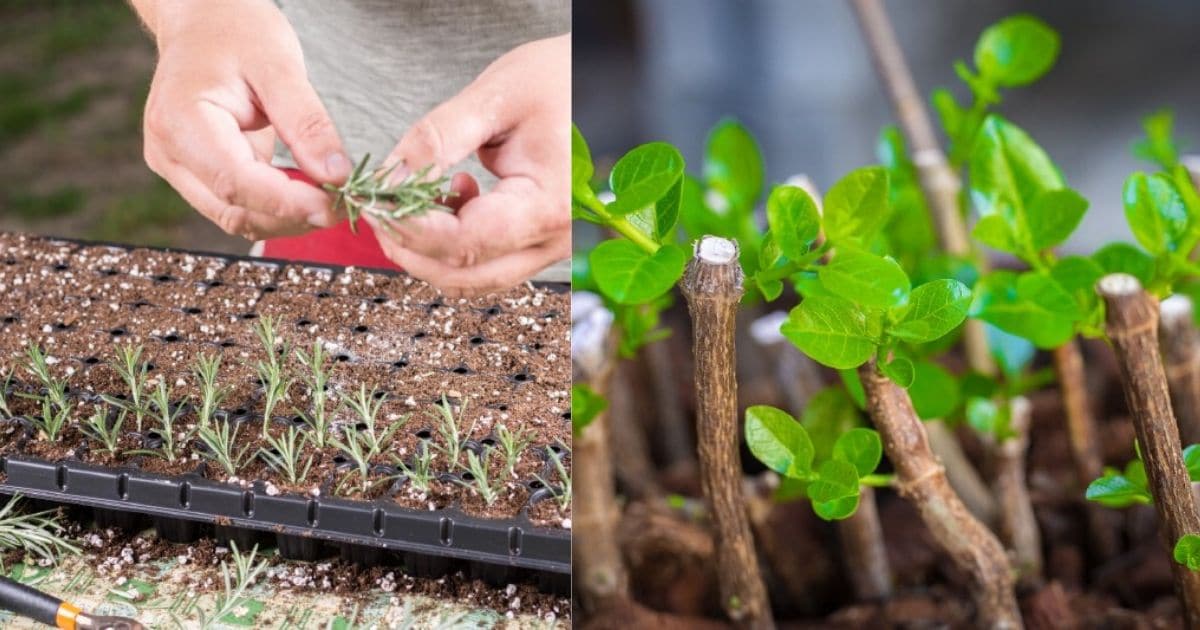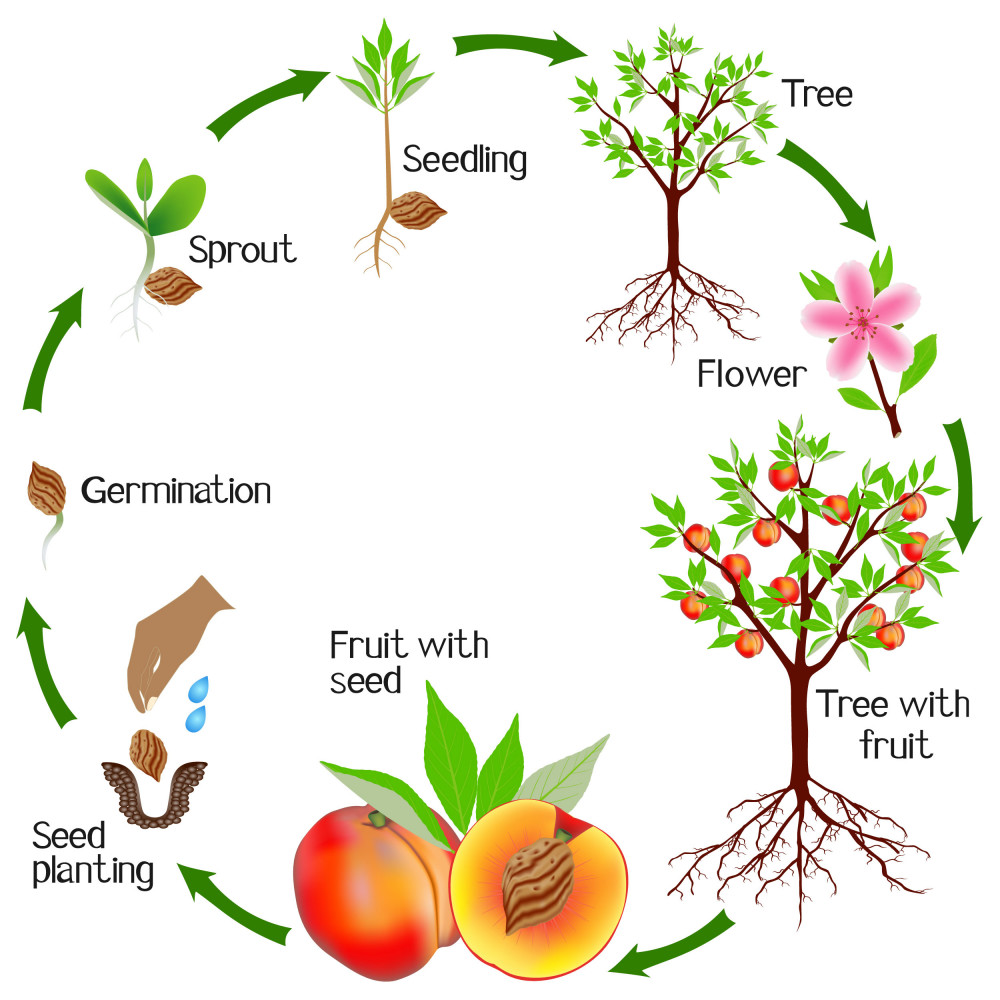Rooting Methods

Once you've taken your cuttings, it's time to get them rooted! There are several methods you can use, each with its own pros and cons. The best method for you will depend on the type of plant you're propagating and your personal preference.
Comparing Rooting Methods, Propagating plants from cuttings
This table compares and contrasts three common rooting methods: water propagation, soil propagation, and rooting hormone use.
| Method | Advantages | Disadvantages |
|---|---|---|
| Water Propagation | Simple and easy to monitor root development | Roots may be more delicate and prone to damage when transplanting |
| Soil Propagation | Roots are more robust and ready for transplanting | Can be more challenging to monitor root development |
| Rooting Hormone Use | Increases rooting success rate | Can be expensive and may not be necessary for all plants |
Examples of Plants Suitable for Different Rooting Methods
Here's a table listing examples of plant species that respond well to specific rooting methods:
| Rooting Method | Plant Species |
|---|---|
| Water Propagation | Pothos, Spider Plant, Coleus |
| Soil Propagation | Rose, Lavender, Fuchsia |
| Rooting Hormone Use | Willow, Jasmine, African Violet |
Water Propagation
Water propagation is a simple and straightforward method that involves placing cuttings in a container of water. The water provides the moisture and nutrients the cuttings need to develop roots.
Here are the steps involved in water propagation:
1. Prepare the cutting: Cut a stem with at least two nodes (the bumps where leaves grow) and remove the leaves from the bottom node.
2. Place the cutting in water: Fill a clean jar or container with water and place the cutting so that the bottom node is submerged.
3. Change the water regularly: Replace the water every few days to prevent algae growth and keep the water fresh.
4. Monitor root development: Roots will typically appear within a few weeks. Once the roots are a few inches long, you can transplant the cutting into soil.
Tips for Success:
* Use distilled or filtered water to avoid chlorine and other chemicals.
* Change the water regularly, especially if it starts to become cloudy or smelly.
* Don't over-crowd the container with cuttings.
* Keep the cuttings in a bright, indirect light location.
Soil Propagation
Soil propagation involves planting cuttings directly into a potting mix. This method encourages the development of stronger, more robust roots.
Here are the steps involved in soil propagation:
1. Prepare the cutting: Cut a stem with at least two nodes (the bumps where leaves grow) and remove the leaves from the bottom node.
2. Prepare the soil: Use a well-draining potting mix and moisten it thoroughly.
3. Plant the cutting: Make a hole in the soil with your finger and insert the cutting so that the bottom node is buried.
4. Water the cutting: Water the cutting thoroughly and keep the soil consistently moist.
5. Monitor root development: Roots will typically appear within a few weeks.
Tips for Success:
* Use a well-draining potting mix to prevent root rot.
* Keep the soil consistently moist but not soggy.
* Avoid overwatering, which can lead to root rot.
* Keep the cuttings in a warm, humid location.
Rooting Hormone Use
Rooting hormones are chemical compounds that stimulate root development in cuttings. They can increase the success rate of propagation, especially for difficult-to-root plants.
Here are the steps involved in using rooting hormone:
1. Prepare the cutting: Cut a stem with at least two nodes (the bumps where leaves grow) and remove the leaves from the bottom node.
2. Dip the cutting in rooting hormone: Dip the cut end of the stem in rooting hormone powder or liquid.
3. Plant the cutting: Plant the cutting in soil or water, following the instructions for either method.
4. Monitor root development: Roots will typically appear within a few weeks.
Tips for Success:
* Use a rooting hormone specifically designed for plant cuttings.
* Follow the manufacturer's instructions carefully.
* Don't over-apply rooting hormone, as this can damage the cutting.
Maintaining Cuttings: Propagating Plants From Cuttings

Imagine your cuttings as tiny seedlings, just starting their journey to become strong, independent plants. Just like a baby needs constant care and attention, your cuttings require the right environment to thrive and develop healthy roots.
Providing Optimal Environmental Conditions
The success of rooting depends heavily on providing the ideal conditions for your cuttings. Think of it as creating a cozy, comfortable nursery for your future plants.
- Light: Cuttings need light, but not too much! Bright, indirect light is best. Avoid direct sunlight, which can scorch delicate leaves and hinder root development. Imagine a sunny windowsill, but with a sheer curtain to filter the light.
- Temperature: Warmth encourages root growth. Most cuttings thrive in temperatures between 65-75°F (18-24°C). A warm room or a heated propagation mat can provide the ideal warmth.
- Humidity: Cuttings love a humid environment. Think of a tropical rainforest, where the air is thick with moisture. You can create this by placing your cuttings in a humid dome, using a spray bottle to mist them regularly, or placing a tray of water nearby.
Caring for Cuttings During Rooting
Once you've set up the perfect environment, it's time to nurture your cuttings. Imagine you're a gardener tending to your precious plants.
- Watering: Keep the rooting medium consistently moist, but not soggy. Think of a damp sponge, not a dripping wet one. Overwatering can lead to root rot, while underwatering can stunt growth.
- Misting: Regular misting helps maintain high humidity, especially for cuttings that prefer a humid environment. Imagine a gentle rain shower, providing refreshing moisture.
- Pest Control: Keep a watchful eye for pests. Aphids, mealybugs, and spider mites can be a problem. Inspect your cuttings regularly and take immediate action if you spot any unwelcome guests. Imagine a brave warrior defending your plants from invaders.
Signs of Successful Rooting and Transplanting
After a few weeks (or even months, depending on the plant), you'll start to see signs that your cuttings are thriving. Imagine watching your little plants grow stronger and more independent.
- New Growth: The appearance of new leaves or shoots is a clear sign of successful rooting. Imagine a tiny sprout pushing through the soil, a sign of new life.
- Firm Roots: Gently tug on the cutting. If it offers resistance, it's a good sign that roots have formed. Imagine a strong anchor holding the cutting firmly in place.
Troubleshooting and Common Problems

Propagating plants from cuttings is a rewarding endeavor, but it's not always a smooth journey. Like any living organism, cuttings can experience issues that can hinder their growth and survival. Recognizing these problems early and addressing them effectively is crucial for success.
Wilting and Dehydration
Wilting is a common issue in cuttings, indicating that they are losing more water than they are absorbing. This can happen due to several factors, including:
- Insufficient humidity: Cuttings require a high humidity level to prevent excessive water loss through their leaves.
- Overwatering: While cuttings need moisture, overwatering can suffocate the roots and prevent them from absorbing water effectively.
- Root damage: Damaged roots can struggle to absorb water, leading to wilting. This can happen during the cutting process or if the roots are disturbed during repotting.
Propagating plants from cuttings - To address wilting, first, assess the humidity level around the cuttings. If it's too low, consider using a humidity dome or placing the cuttings in a humid environment. If overwatering is suspected, allow the rooting medium to dry slightly before watering again. If root damage is a concern, gently examine the roots and prune any damaged sections.
Preventing wilting involves maintaining a humid environment, using a well-draining rooting medium, and avoiding overwatering.
Fungal Diseases
Fungal diseases are another common challenge when propagating plants from cuttings. These diseases can attack the stems, leaves, or roots, leading to discoloration, rot, and ultimately, death. Fungal growth thrives in moist, humid conditions, making cuttings particularly susceptible.
- Root rot: This occurs when the roots are constantly wet, creating an environment conducive to fungal growth. Symptoms include wilting, yellowing leaves, and a foul odor from the rooting medium.
- Powdery mildew: This fungal disease appears as a white powdery coating on the leaves, often affecting cuttings grown in humid conditions.
- Botrytis blight: This fungus attacks stems, leaves, and flowers, causing brown spots and decay. It is particularly common in cuttings that are crowded or have poor air circulation.
To combat fungal diseases, it's essential to prevent them in the first place. Use sterilized rooting mediums and containers, ensure good air circulation around the cuttings, and avoid overwatering. If fungal infections are detected, remove affected parts and treat with an appropriate fungicide.
Slow or Stunted Growth
Cuttings may experience slow or stunted growth for various reasons.
- Inadequate light: Cuttings require adequate light for photosynthesis, which fuels growth. Insufficient light can lead to elongated, weak stems and pale leaves.
- Nutrient deficiencies: Cuttings need essential nutrients to thrive. If the rooting medium lacks these nutrients, growth can be stunted.
- Root damage: Damaged roots can hinder the uptake of nutrients and water, leading to slow growth.
To encourage growth, provide cuttings with sufficient light, either natural or artificial. Consider using a balanced fertilizer specifically designed for cuttings. If root damage is suspected, carefully examine the roots and prune any damaged sections.
Questions and Answers
What is the best time of year to take cuttings?
The ideal time to take cuttings is during the plant's active growing season, usually in spring or early summer. This is when the plant is producing new growth and the cuttings are more likely to root successfully.
How long does it take for cuttings to root?
The time it takes for cuttings to root varies depending on the plant species, rooting method, and environmental conditions. It can range from a few weeks to several months.
Can I propagate any plant from cuttings?
While many plants can be propagated from cuttings, some are more challenging than others. Some plants, like succulents, are relatively easy to root, while others, like certain trees, require more specialized techniques.
Do I need to use rooting hormone?
Rooting hormone is not always necessary, but it can significantly increase the success rate of rooting cuttings. It provides a boost of hormones that stimulate root development.
